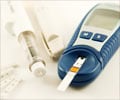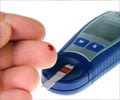- Prevalence, outcomes, and cost of chronic kidney disease in a contemporary population of 2·4 million patients from 11 countries: The CaReMe CKD study - (https://www.thelancet.com/journals/lanepe/article/PIIS2666-7762(22)00132-6/fulltext)
- Physiology, Glomerular Filtration Rate - (https://www.ncbi.nlm.nih.gov/books/NBK500032/ )
- Acute Kidney Injury and Chronic Kidney Disease as Interconnected Syndromes - (https://pmc.ncbi.nlm.nih.gov/articles/PMC9720902/ )
- Acute Kidney Injury: Definition, Pathophysiology and Clinical Phenotypes - (https://pmc.ncbi.nlm.nih.gov/articles/PMC5198510/ )
- Chronic Kidney Disease - (https://www.ncbi.nlm.nih.gov/books/NBK535404/ )
- Should Cystatin C eGFR Become Routine Clinical Practice? - (https://pmc.ncbi.nlm.nih.gov/articles/PMC10377068/ )
The Glomerular Filtration Rate (GFR) is a key indicator of kidney function, helping healthcare professionals assess kidney health and detect issues like chronic kidney disease (CKD) and acute kidney injury (AKI). Use our validated calculator for an accurate estimate of GFR to aid in early diagnosis and treatment planning
Calculate GFR Value
Why is GFR Important?
A recent Lancet report has indicted that 10% of the world population suffers from some form of kidney disease.(1✔) . The simplest tool to measure and track kidney function is by GFR calculation using creatinine.
What is GFR?
GFR measures the volume of blood filtered by the glomeruli in the kidneys per minute, expressed in milliliters per minute (mL/min). The glomeruli are tiny blood vessels in the kidneys that remove waste and excess substances while retaining essential proteins and nutrients. A normal GFR is approximately 120 mL per minute (180 liters per day), indicating healthy kidney function. A declining GFR can suggest kidney impairment.(2✔)Role of GFR in Diagnosing and Managing Kidney Conditions
GFR is a fundamental parameter in assessing kidney health and is crucial in diagnosing and managing kidney-related conditions. It provides valuable insights into how well the kidneys are functioning and helps healthcare providers take necessary actions to prevent further complications.
A persistently low GFR is a strong indicator of kidney dysfunction and can signal the presence of chronic kidney disease (CKD) or acute kidney injury (AKI). CKD develops gradually over time, often without noticeable symptoms in the early stages, making regular GFR assessments essential for early detection. In cases of AKI, where kidney function declines suddenly, a significant drop in GFR can help diagnose and address the condition promptly (3✔).
Five Stages of Chronic Kidney Disease (CKD) Based on GFR Levels
GFR is a critical metric used to classify CKD into five stages, ranging from mild kidney impairment to complete kidney failure. These stages help physicians assess the extent of kidney damage and predict the risk of progression to end-stage renal disease (ESRD).
- Stage 1 (GFR > 90 mL/min) – Normal: Kidney function is normal, but there may be signs of kidney damage, such as protein in the urine.
- Stage 2 (GFR 60–89 mL/min) – Mild: A slight decline in kidney function, usually without noticeable symptoms.
- Stage 3a (GFR 45–59 mL/min) – Mild to Moderate: Kidney function is moderately reduced, and complications like high blood pressure or anemia may begin to appear.
- Stage 3b (GFR 30–44 mL/min) – Moderate to Severe: More significant kidney impairment, with a higher risk of symptoms and complications.
- Stage 4 (GFR 15–29 mL/min) – Severe: Severe kidney dysfunction, requiring close medical monitoring and preparation for dialysis or transplant.
- Stage 5 (GFR < 15 mL/min) – Kidney Failure: End-stage kidney failure, necessitating dialysis or a kidney transplant for survival.
Tips to Support Kidney Health and Maintain a Stable GFR
Stay Hydrated
Drinking enough water helps flush out waste and supports kidney function. However, excessive intake should be avoided for kidney disease.Manage Blood Pressure and Blood Sugar
High blood pressure and diabetes damage the kidneys over time. Regular monitoring, a balanced diet, and medications help prevent complications.Follow a Kidney-Friendly Diet
Kidney-Friendly Diet applies to people who have some amount of kidney dysfunction. A kidney-friendly diet emphasizes low sodium, controlled protein intake, and plenty of fruits and vegetables to support kidney function and overall health. Reduce salt, processed foods, and excess protein to ease the kidneys' workload. Include fresh fruits, vegetables, and whole grains for balanced nutrition.Avoid Nephrotoxic Drugs
Frequent use of painkillers should generally be avoided, as non-steroidal anti-inflammatory drugs (NSAIDs) can harm the kidney. One should also avoid certain antibiotics , and contrast agents can harm the kidneys. Always consult a doctor before taking any medications. Some examples include the effects of angiotensin-converting enzyme (ACE) inhibitors, angiotensin receptor blockers (ARBs), cyclosporins, NSAIDs, and tacrolimus, which can impact intraglomerular hemodynamics by altering the GFR.Schedule Regular Check-Ups
Routine kidney function tests help detect early issues. Those with risk factors should monitor GFR and creatinine levels regularly.FAQs
1. Can GFR be improved?
1.Yes, GFR can sometimes be improved, especially if the decline is due to reversible factors such as dehydration or medication effects. Lifestyle changes like maintaining a healthy diet, staying well-hydrated, controlling blood pressure and blood sugar levels, and avoiding nephrotoxic drugs can help support kidney function. In cases of chronic kidney disease (CKD), while damage may not be fully reversible, proper management can slow its progression.
2. Does age affect GFR?
Yes, GFR naturally decreases with age. After the age of 40, kidney function declines at a rate of about 1 mL/min per year. However, a lower GFR in older adults does not always indicate kidney disease unless it falls significantly below the normal range for their age group (5✔).
3. How is GFR measured?
GFR is estimated using blood tests that measure serum creatinine levels, which reflect how efficiently the kidneys filter waste. This measurement is adjusted based on factors like age, gender, and body size to provide an estimated GFR (eGFR). In some cases, more precise methods such as inulin clearance or cystatin C testing may be used for accuracy (6✔).
4. Is a low GFR always a sign of kidney disease?
Not always. A temporary decrease in GFR can be caused by factors like dehydration, infections, heart failure, or the use of certain medications like NSAIDs and diuretics. In these cases, GFR may return to normal once the underlying issue is addressed. However, persistently low GFR readings over several months indicate potential kidney disease and require medical evaluation.
5. What symptoms might appear with a low GFR?
In the early stages, a low GFR may not cause noticeable symptoms. As kidney function declines, symptoms may include fatigue, swelling (edema) in the legs and face due to fluid retention, changes in urination (frequency, foamy urine, or blood in urine), nausea, loss of appetite, and high blood pressure. Severe cases may lead to shortness of breath, confusion, and difficulty concentrating.
6. How does protein intake affect GFR?
High protein intake increases the kidneys' workload by generating more waste products for filtration, which can accelerate kidney function decline in individuals with CKD. However, for healthy individuals, moderate protein consumption does not harm kidney function. People with kidney disease are often advised to follow a low-to-moderate protein diet to reduce strain on the kidneys and slow disease progression.
7. Does women have lower GFR?
Yes, women typically have a lower GFR compared to men, primarily due to differences in body composition and muscle mass. GFR is a vital indicator of kidney function, helping to assess kidney health in women. Regular monitoring of GFR is important for early detection of kidney disease and for guiding appropriate treatment decisions.
8. How does race affect GFR measurements?
Race can influence GFR estimates due to variations in muscle mass and body composition among different populations. For instance, African Americans may have higher serum creatinine levels, which can lead to an overestimation of kidney function if not adjusted for race. Many GFR calculators include race as a factor to provide more accurate estimates.
9. What are the techniques used to measure GFR?
There are several techniques to measure GFR, including:
- Inulin Clearance Test: A gold standard method that involves injecting inulin and measuring its clearance from the blood.
- Creatinine Clearance Test: A common method that estimates GFR by measuring creatinine levels in blood and urine over a 24-hour period.
- Radioisotope GFR Measurement: Involves using radioactive tracers to measure kidney function.
- eGFR Calculations: Utilizes serum creatinine levels along with demographic factors to estimate GFR quickly and non-invasively.
10. What is eGFR, and how is it different from GFR?
eGFR (estimated Glomerular Filtration Rate) is a calculated estimate of GFR based on serum creatinine levels, age, sex, and sometimes race. Unlike the direct measurement of GFR, which involves more complex procedures, eGFR is a simpler and quicker method used in clinical practice to assess kidney function.


 Email
Email








